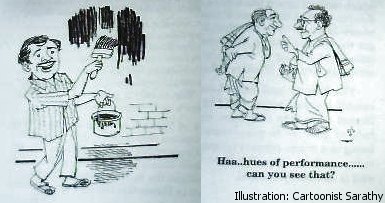ARTICLES
Dance
Varnam in Bharatanaatyam repertoire
- V.P.Dhananjayan
from his book "beyond Performing: Art and Culture"
e-mail: bkalanjali@gmail.com
January 2012

Varnam is the centre-piece and the most elaborate
part of a Bharatanaatyam recital. The format of the dance
composition for a Varnam justifies the importance given to this dance
number. This has the judiciously blended components of Nritta,
Nritya and Natya - the essence of Bharatanaatyam. Yet, the meaning
of the word Varnam in the context of Carnatic music or dance has not
been accurately delineated by any scholar, so far known. The
musicologist should delve deep into the origin of the word Varnam
employed to name a particular format of music composition.
Dr.Arudra has given a somewhat convincing meaning in his article
published in Sruti magazine (issue 79, April 1991). Those who are
interested may refer to that article.
I am not going into the meaning of the word "Varnam". But as far
as I am concerned, it is a musical term, and as that format of music is
used in dance, we continue to call it a Varnam. Many of you might
have noticed that in my Bharatanaatyam presentations, I call the item
"Nrutyo-pahaaram". In a music concert, Varnam is employed only as a
warming up exercise whereas in Bharatanaatyam, Varnam is the touchstone
to judge the competence of Bharatanaatyam dancers. As we all know
theoretically, there are Taana-Varnams - more suitable for music
concerts and Padavarnams - more suitable for dance delineation.
Taanavarnam is 'gamaka' oriented and hence good for vocal
exercises. The lyrical content is minimal, and there are not many
Bhava laden passages.
Padavarnam, on the other hand, is Raga and Bhava oriented with emphasis
on the lyrics being explicit, content being Sringara or Bhakti.
Swarajathi is another format. which is almost like the Padavarnam, but
in the charana, rhythmic syllables are incorporated with 'swaras' which
make it sound like a more Naatya-oriented composition.
The beauty and importance of Varnam compositions have been established
and popularised by dancers only from the time this musical format came
into existence, and even today music composers take the help of dancers
to popularise their Varnam compositions. The reason being in a
music concert no one notices the Varnam being sung, probably many walk
in only after that, but in Dance this becomes a center-piece and is
obviously noticed.
Padavarnams gained importance with the Thanjavur quartette, who composed
excellent Bhava laden compositions intended for Bharatanaatyam (Sadir)
and gave it an architecturally beautiful structure, making it an
indispensable item.
In the early days even in Padavarnam, more of Padarthabhinaya was
employed and the Sancharis were very minimal. But today, we can
see the real meaning of Varnam, embellished with complicated Jatis,
explicit Sancharis, etc., thus justifying the name 'Nrutyopahaaram',
which literally means, an offering of dance and mime.
V.P Dhananjayan and his wife Shanta Dhananjayan, popularly known as
the Dhananjayans are one of the legendary dancing couples of
India. They have trained several students through their dance
school Bharatakalanjali.
|